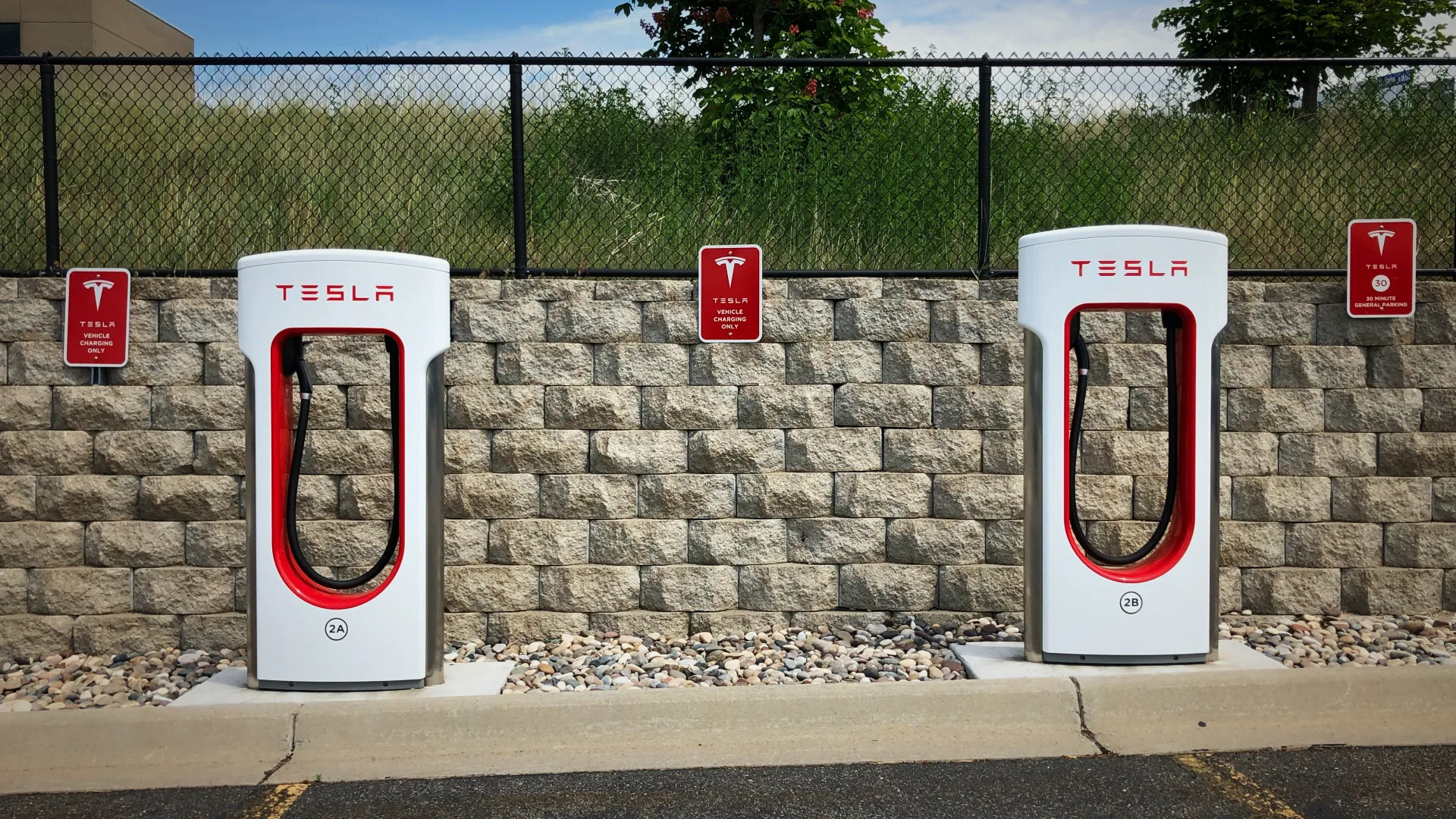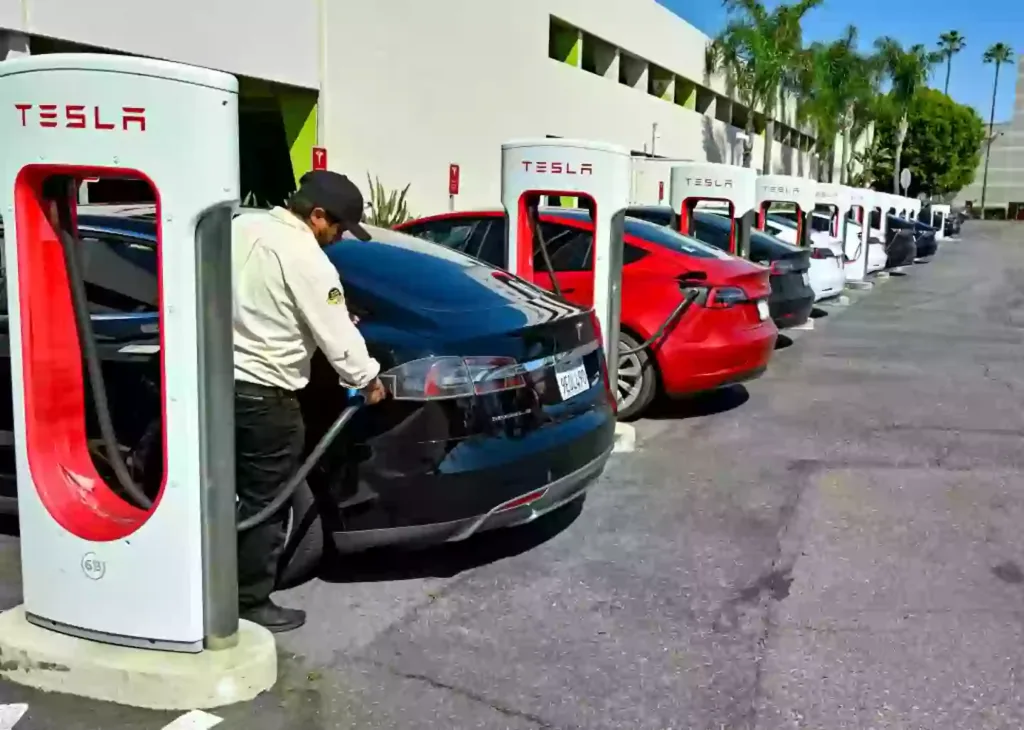Tesla Owner Shares Genius Hack to Slash Electricity Costs—Here’s How He Saved Big!

Electric Vehicles: A Cheaper Alternative to Gas-Powered Cars
In recent years, electric vehicles (EVs) have become the go-to choice for many car buyers. Not only are they considered an eco-friendly alternative to traditional gasoline-powered cars, but they also offer significant savings on fuel and maintenance costs. Tesla, a leader in the EV industry, has continued to dominate the market with its cutting-edge technology and cost-efficiency.
Consumers are becoming more environmentally conscious, and governments worldwide are incentivizing EV purchases with tax breaks and rebates. Many cities are also implementing stricter emissions regulations, making electric vehicles an attractive long-term investment. The push toward sustainable energy has only fueled Tesla’s growing popularity. Additionally, with the rise in gas prices and supply chain disruptions affecting fuel costs, switching to an EV seems like a logical and financially sound decision.
But just how much can Tesla owners save? One Tesla driver recently shared his six-month electric bill and revealed an ingenious way to cut back on electricity costs, proving that EVs can be an incredibly cost-effective investment. His story serves as a valuable case study for anyone considering making the switch.
Tesla Owner Reveals His Impressive Savings
A Tesla owner took to social media to share how much money he has saved since switching from a gas-powered car to an electric vehicle. While many potential EV buyers worry about rising electricity costs, this owner proved that with the right strategy, you can significantly reduce expenses while enjoying all the benefits of driving an electric car.
One of the biggest misconceptions about EVs is that they drastically increase electricity bills, making them just as costly as gasoline-powered cars. However, real-life testimonials like this one debunk that myth. By being strategic about when and where to charge, Tesla owners can minimize expenses while maximizing the convenience of home charging. This story not only highlights the financial benefits of owning an EV but also sheds light on how simple adjustments can lead to significant savings.
The Numbers Speak for Themselves: Tesla vs. Gasoline Costs
Tesla owners often boast about their savings, but this driver’s experience was particularly eye-opening. According to his post, he was able to save as much as $1,800 in just six months by making the switch.

(Jeff Gritchen/MediaNews Group/Orange County Register via Getty Images)
Bilal Sattar, a Tesla driver, shared on Twitter:
“Six months and roughly 10,000 miles, I’ve spent only $573 to charge. An equivalent gas car at $4/gallon would have cost roughly $2,400. I saved ~$1,800.”
This substantial difference highlights just how cost-effective EVs can be in comparison to gas-powered cars. His savings calculation was backed by a screenshot from the Tesla App, which provides a direct comparison of fuel vs. electric charging expenses.
These numbers also make an important point: the long-term savings of EV ownership far outweigh the initial investment. While Teslas and other EVs may have a higher upfront cost, the reduction in fuel expenses and maintenance quickly makes up for it. Additionally, Tesla’s regenerative braking system helps extend the lifespan of brake pads, cutting down on repair costs. Over time, this means even more financial savings for Tesla owners.
🚗💡 Want to see the original tweet? Check it out here: Bilal’s Post
How Did He Save So Much? His Smart Charging Strategy
So, how did Bilal manage to keep his electricity costs so low? He followed a strategic approach, taking advantage of multiple cost-cutting opportunities available to Tesla owners. Here are the key ways he saved money on charging:
1. Using Free Charging Locations
One of Bilal’s top tips was utilizing free charging stations. Many retailers, such as Walmart and Target, offer complimentary EV charging stations to customers. By taking advantage of these perks, he was able to charge his Tesla at no cost while running errands.
Several shopping malls, hotels, and office buildings also provide free EV charging, making it easier than ever to charge up without paying a dime. Some workplaces even have dedicated EV charging spots as part of their sustainability initiatives. With a little planning, Tesla owners can drastically reduce their electricity expenses simply by incorporating free charging into their routines.
2. Avoiding Superchargers Whenever Possible
While Tesla’s Supercharger network is convenient for long-distance travel, it tends to be more expensive than home charging. Bilal advised fellow Tesla owners to use Superchargers only when necessary to keep costs down.
Superchargers are an excellent resource when you need a quick charge on a road trip, but they are not the most cost-effective option for daily charging. Unlike home electricity rates, which vary depending on your utility provider, Supercharger rates are often higher due to demand-based pricing. This makes them a better solution for emergencies rather than regular use.
3. Charging at Home During Off-Peak Hours
Another essential strategy he implemented was charging his Tesla at home during off-peak hours when electricity rates are lower. Many power companies offer time-of-use plans, where energy costs fluctuate throughout the day. Charging overnight or during non-peak hours can lead to significant savings.
Home charging also gives Tesla owners control over their energy consumption, allowing them to integrate smart home technologies to monitor and optimize their electricity use. Many utility companies even offer rebates and incentives for EV owners who charge at night, further driving down costs.
4. Utilizing Solar Panels for Ultimate Savings
Bilal also revealed that he generates a significant portion of his car’s energy from his solar panels. By harnessing renewable energy, he not only reduces reliance on the grid but also lowers his overall electricity bill.
6 months and roughly 10k miles I've spent only $573 to charge. An
— Bilal Sattar (@bilalsattar) January 18, 2024
equivalent gas car at $4/gallon would have cost roughly $2400.
I saved ~$1800 pic.twitter.com/8mQuOroCAK
Solar panels provide an additional layer of cost savings by allowing EV owners to produce their own clean energy. In the long run, this makes charging essentially free once the initial investment in solar panels is recouped. With advancements in solar battery storage, homeowners can even store excess energy during the day and use it to charge their vehicles at night, making the most of renewable energy resources.
Social Media Buzz: Tesla Owners Share Their Savings
Bilal’s post sparked a flood of reactions from Tesla owners who were eager to share their own experiences. Some highlighted their multi-year savings, while others shared screenshots of their Tesla app’s cost comparisons.
💬 “I’ve saved over $5,000 in gas costs since switching to my Model Y last year!” – See the post here
💬 “Seven years in, and I’ve saved thousands on maintenance and fuel.” – Check out the discussion
💬 “EVs are the future. I charge at home while I sleep, and my electricity bill has barely changed!” – Join the conversation
The Bigger Picture: Tesla’s Growing Popularity
The demand for electric vehicles continues to surge, and Tesla remains at the forefront. In the first half of 2024 alone, Tesla delivered over 830,000 vehicles, showcasing the growing popularity of EVs worldwide.
Final Thoughts: Why More People Are Going Electric
Bilal’s experience highlights the financial benefits of switching to an electric vehicle. While many people are drawn to EVs for environmental reasons, the potential savings are another compelling reason to make the switch.
If you’re still on the fence about going electric, consider this: how much could you save over a year, five years, or even a decade? The numbers speak for themselves. With lower fuel costs, fewer maintenance expenses, and the potential for renewable energy integration, EV ownership is a smart financial move.
🔋🚘 Thinking of buying a Tesla? Check out their latest models here: Tesla Official Website
Featured Image Credit: Jeff Gritchen/MediaNews Group/Orange County Register via Getty Images






